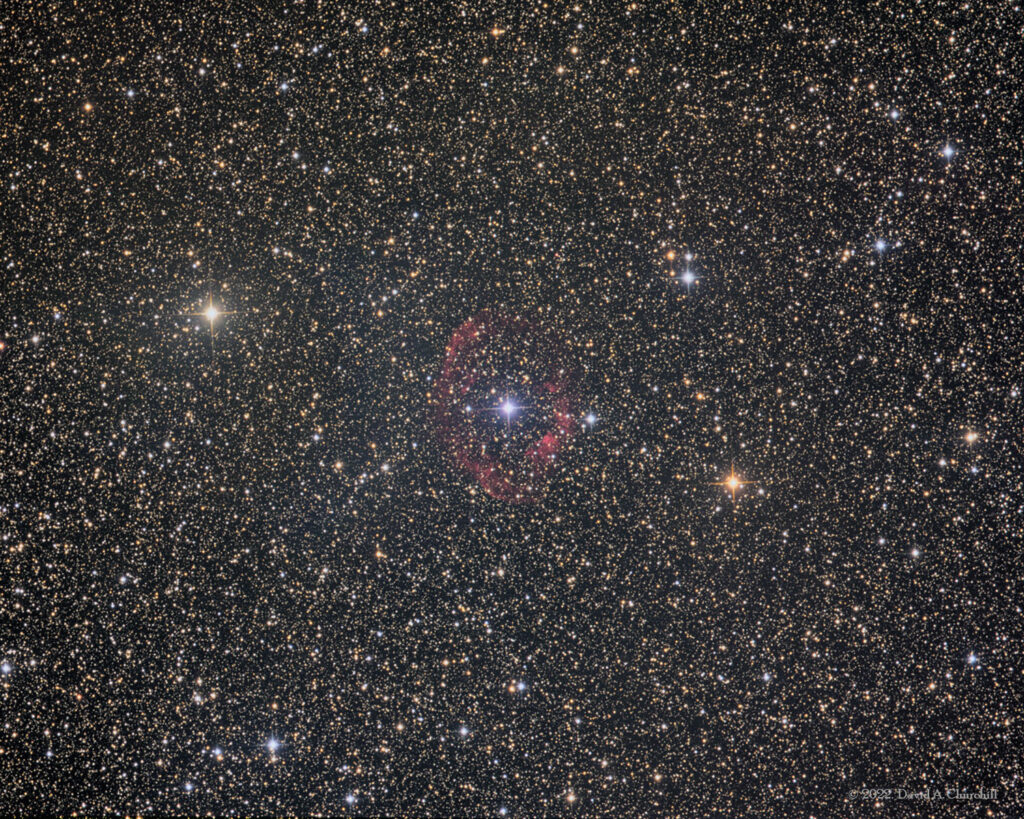RCW 58
Emission Nebula, Carina
- Description
- Technical
- Links
RCW 58, in the constellation of Carina, surrounds and originates from a special type of star, a Wolf-Rayet star, WR40 (HD 96548, WN8).The bright blue star in the middle of the nebula is WR40. The nebula is referred to as a ring nebula, due to its open appearance. The nebula is expanding at a rate of 87 km/s. WR stars are huge, perhaps as large as 20 solar masses. They lose mass as they evolve at an incredible rate, producing very strong solar winds. They are very hot with temperatures ranging from 30,000 to 200,000 Kelvin. There are about 500 of these stars cataloged in our Milky Way Galaxy. They give off a large amount of ultraviolet (UV) radiation that ionizes the surrounding nebula and makes it glow, allowing us to see it. Most of these WR stars are thought to progress to a supernova explosion.
The RCW Catalogue (from Rodgers, Campbell & Whiteoak) is an astronomical catalogue of Hα-emission regions in the southern Milky Way, described in (Rodgers et al. 1960). It contains 182 objects, including many of the earlier Gum catalogue (84 items) objects. The RCW catalogue was compiled by Alexander William Rodgers, Colin T. Campbell and John Bartlett Whiteoak. They catalogued southern nebulae while working under Bart Bok at the Mount Stromlo Observatory in Australia in the 1960s.
Telescope: Planewave CDK17 (FR) f4.5
Mount: Astro Physics 1600GTO
Camera: QHY16200A/ Integral FW
Guider: Agena Starguide II / SBIG STi
Filters: Astronomik 36mm LRGB
L: 52×10 mins = 520 mins, R: 24×10 mins = 240 mins, G: 24×10 mins = 240 mins, B: 24×10 mins = 240 mins
Total Imaging Time: 20h 40m
Data Imaged remotely over 10 nights during March 2022.
Imaged from Observatorio El Sauce, Chile, in partnership with Fred Espenak.
Data acquisition & Processing by David Churchill.
None

